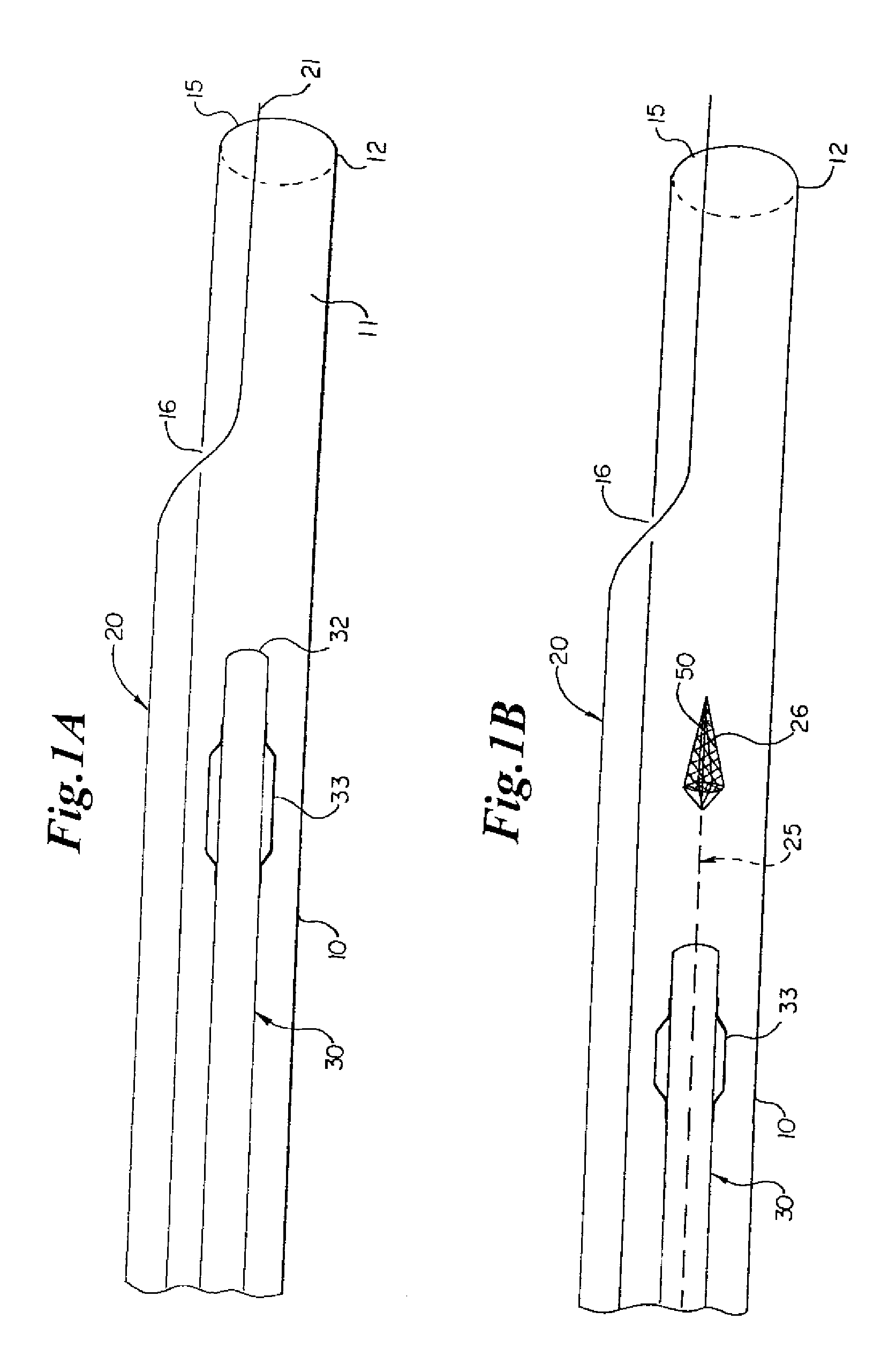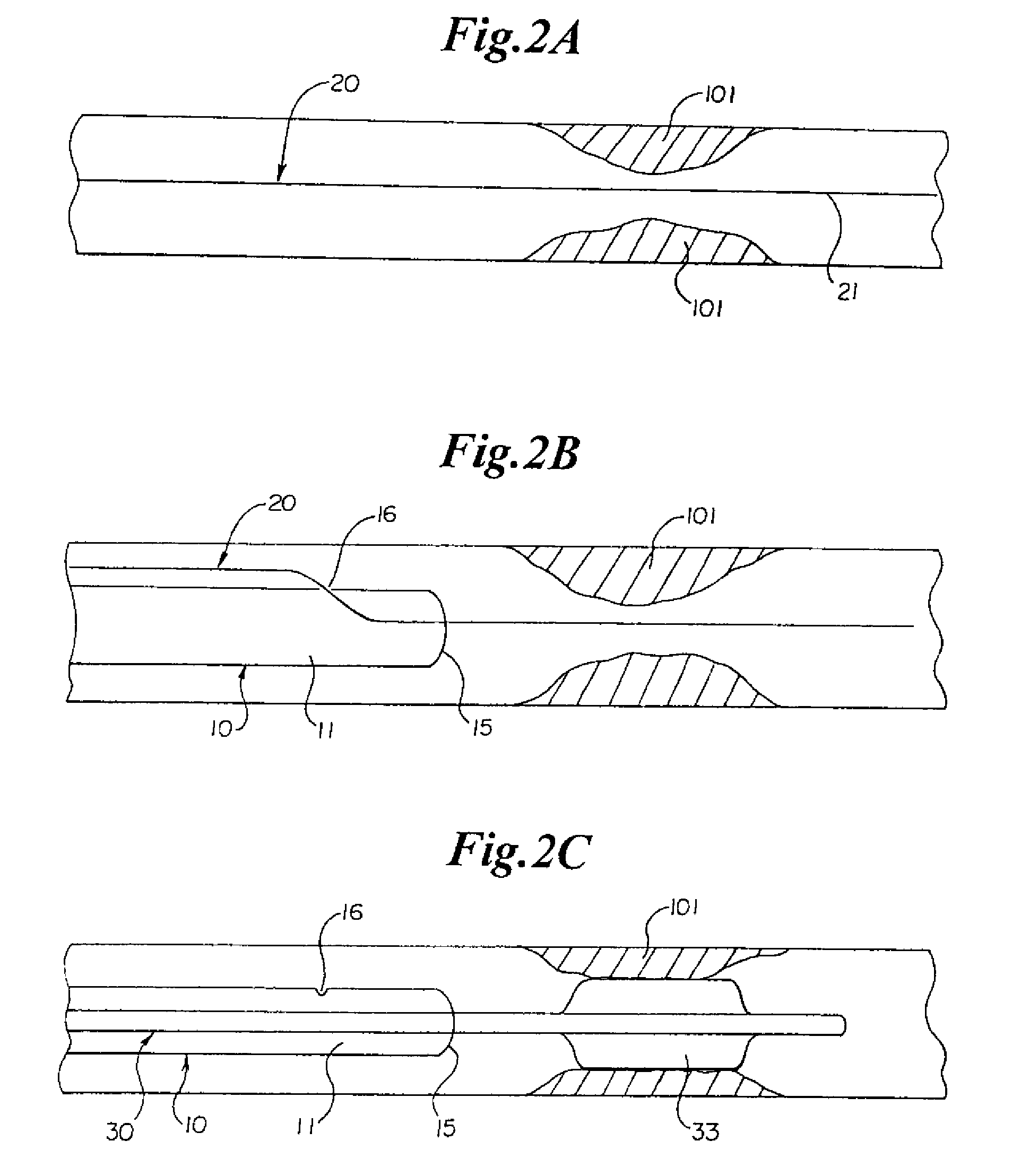Rapid exchange sheath for deployment of medical devices and methods of use
a technology of medical devices and sheaths, applied in the field of surgical instruments and methods for deploying endoluminal medical devices, can solve the problems of ischemia or infarct of the organ which the vessel supplies, occlusion of the narrower vessels downstream, and possible stroke causes, and the inability to adjust the steerability of the guidewir
- Summary
- Abstract
- Description
- Claims
- Application Information
AI Technical Summary
Benefits of technology
Problems solved by technology
Method used
Image
Examples
Embodiment Construction
[0042] Referring now to the drawings, an embodiment of the rapid exchange sheath for deployment of angioplasty catheter 30 is depicted in FIG. 1A. The sheath comprises elongate tubular member 10 having lumen 111 communicating with a proximal end and distal end 12. Tubular member 10 has first opening 15 at distal end 12, and second opening 16 a short distance proximal to distal end 12. Opening 16 can be located from 1 millimeter to 50 centimeters proximal of openings 15, and at distances of 2, 4, 6, 8, 10, 12, 14, 16, or 18 centimeters proximal of opening 15, or at any other suitable distance. Lumen 11 is adapted to receive an endoluminal medical device, such as angioplasty catheter 30. Angioplasty balloon 33 is mounted on distal end 32 of the angioplasty catheter. Guidewire 20, which has a proximal end and distal end 21, passes through opening 16, lumen 11, and opening 15 of tubular member 10.
[0043] Another embodiment of the rapid exchange sheath for deployment of angioplasty cathe...
PUM
 Login to View More
Login to View More Abstract
Description
Claims
Application Information
 Login to View More
Login to View More - R&D
- Intellectual Property
- Life Sciences
- Materials
- Tech Scout
- Unparalleled Data Quality
- Higher Quality Content
- 60% Fewer Hallucinations
Browse by: Latest US Patents, China's latest patents, Technical Efficacy Thesaurus, Application Domain, Technology Topic, Popular Technical Reports.
© 2025 PatSnap. All rights reserved.Legal|Privacy policy|Modern Slavery Act Transparency Statement|Sitemap|About US| Contact US: help@patsnap.com



